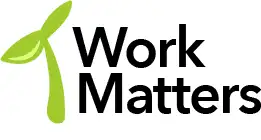
Hiring New Comers to Canada
Hiring New Comers to Canada
Two options exist for employers in Ontario to hire newcomers to Canada: primary immigration and secondary migration.
The Ontario Immigrant Nominee Program (ONIP) is the pathway for employers to recruit international workers through primary immigration. The Employer Job Offer streams are designed to hire workers in skilled positions, recent graduates in Ontario, and in-demand skilled workers. There are specific criteria for an employer to qualify and steps to complete the process. https://www.ontario.ca/page/oinp-employer-job-offer-streams-employer-guide
While primary immigration is a worthwhile, it can be a long and demanding pathway for employers and immigrants alike. Secondary migration may present a promising alternative for both. Our research shows that immigrants who have already settled in one of Canada’s large cities are often underemployment or unemployment, while many of them would actually prefer a small-town environment to live and work because that is where they came from.
*Why do newcomers to Canada primarily settle in Montreal, Toronto and Vancouver (MTV)?
Newcomers report that these three cities are the most well-known destinations in Canada, in addition to typical Canadian features such as rivers, lakes, forests, wildlife, and multi-culturalism. However, newcomers also share that cities and regions beyond MTV, as well as the vastness and diversity of Canada’s geography are relatively unknown. Our consultations demonstrate a disconnection between the “images of Canada” and what the newcomer experiences upon landing in MTV.
*How does this impact smaller communities?
The concentration of immigrant settlement in the MTV areas has created an urban-rural imbalance. Smaller cities, towns and rural regions are unfamiliar communities that do not attract newcomers at even a fraction of the rate Montreal, Toronto and Vancouver do.
While cities are growing in large part due to immigration from abroad, smaller and rural communities are experiencing slow, stagnant or declining populations in large part because they are unknown to immigrant newcomers.
This imbalance is pronounced in:
- supply of workers (too many in cities and not enough in small towns).
- demand for workers (low in cities, high in small towns).
- worker demographics (large working-age population in cities, rapidly ageing population in small towns).
- population growth (rising in cities, stagnant or declining in small towns).
- skills/job mismatching (cities have workers who are underemployed or unemployed, small towns struggle to access skilled workers matched to in-demand jobs).
*How can we address this imbalance and attract skilled workers to smaller towns?
Although there has been some effort to influence secondary migration through the Peel Newcomer Fair and other initiatives such as bus tours and marketing efforts, none of these seem to produce concrete results. Our consultations reveal that a lack of familiarity with and personal connections in prospective small communities is a disincentive. Potential secondary migration needs to be informed by what life is like in our rural region, as well as economic opportunities and host community amenities.
We have determined the following hierarchy of information required to build awareness, familiarity and motivation to move to our region:
- Identify: Awareness of matched economic 0pportunity – The newcomer needs to be aware of the exact jobs, career pathways and business opportunities.
- Nurture: Familiarity with the community, workplace and lifestyle – The newcomer needs to develop a sense of what life is like in a small town and be supported by a community member or future co-worker to help navigate that familiarization process. Personal connections and relationship-building between host community and candidate are the most likely to be effective in encouraging a newcomer to move.
- Stay: A welcoming community that supports retention – The newcomer needs to feel that their new community will accept them, demonstrate that they are valued and instill the feeling that they belong.

*How can local employers communicate their labour force needs among newcomer job-seekers in urban areas so that they can identify well-matched economic opportunities in Renfrew and Lanark?
Engaging with regional workforce development groups such as the Labour Market Group (LMG) of Renfrew & Lanark is a promising practice to identify in-demand jobs and forecast labour needs. Also, participating in research initiatives such as LMG’s Employer One Survey allows for improved regional workforce and training program planning. Employers can also communicate with newcomer employment agencies and settlement agencies in urban centres to make their work force needs known and to reach job-seekers in urban areas.
*How can employers foster the candidate/employer/community relationship required for the urban candidate to feel secure enough to move?
As we now know, passive recruitment methods alone, such as job fairs, are not effective in motivating the move from urban to rural. The candidate needs to be able to build some familiarity with the way of life in the host community through a personal connection with a community member or potential colleague using dynamic communication tools. The host community member can tell their true story of life “on the ground” and provide crucial information similar to pre-arrival services offered during primary immigration. We learned in our work supporting community members who had sponsored refugee families that these personal connections beyond a service-provider relationship helped newcomers not only navigate their new reality but also quickly realize their community integration.
*How can employers participate in creating a welcoming community that invites a new hire and their family to become established residents?
Employers who demonstrate a commitment to create a more diverse workplace send a clear signal that our region is in the business of addressing labour shortages and revitalizing the economy through secondary migration. Employers can adopt culturally appropriate recruiting practices by creating ads and conducting interviews and testing that are inclusive in nature. They can ensure cultural competency is leading the communications and that bias is monitored for throughout the process.
Once they have welcomed an immigrant newcomer into the workplace, employers can offer workplace-based services that enhance the quality and thereby the speed of community integration for the new hire. “Lunch and Learn” cultural sharing, investing in Intercultural Competency Training for leaders and staff, creating English language learning opportunities on-site, and offering a workplace/community liaison to each new hire are all examples of low-cost/high-impact options to consider.
Employers have a powerful voice in advocating for diverse communities and workplaces. Community leaders and decision-makers highly value the voice of employers, especially during periods of economic downturn or widespread workforce challenges. Employers can collaborate to share resources to address common challenges and respond to opportunities to stimulate economic security and prosperity.
Local Immigration Partnership Renfrew & Lanark
Community Settlement Initiative Renfrew & Lanark
lip.assistant.renfrewlanark@gmail.com





Who We Are
We are an Employment Ontario funded project designed to bring together job seekers, incumbent workers, employers, and community partners to develop and improve Human Resources and recruitment practices in Lanark and Renfrew Counties.